What is lacking in the body that causes diabetes?
According to available history, diabetes has existed for thousands of years, except that in ancient times in China it was known as thirst. Ancient pioneers found that people with this type of disease commonly suffer from thirst, and their urine attracts a lot of ants and flies, and after continuous research, it was found that the sugar content in the urine of such people is relatively high.

The earliest record of diabetes in China was in the Eastern Han Dynasty, followed by the Sui Dynasty's Ancient and Modern Record of Examination and Recipes, which also recorded that diabetic patients' urine was sweeter, and the famous king of medicine, Sun Simiao, proposed exercise and dietary treatments for diabetes. Although research on diabetes has been ongoing, there is still no cure for the disease. Those who like to think about it may think that diabetics suffer from a deficiency of some substance, but let's listen to what the healers have to say.
1. What are the causes of diabetes?
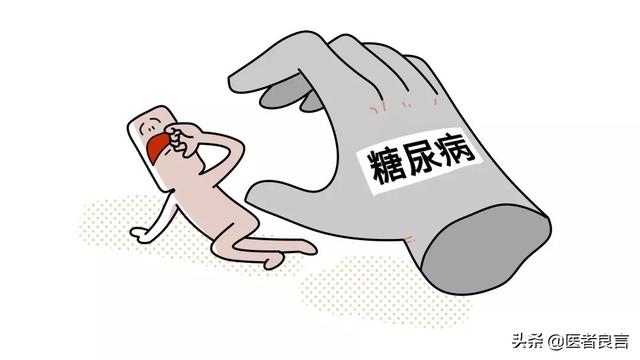
In all fairness, the cause of diabetes is currently unclear, not because of a lack of in-depth research, but because the etiology and pathogenesis of diabetes are complex, but overall, diabetes develops under the combined effect of genetic and environmental factors.
There exists a hormone called insulin in our body, this hormone is a little different from other hormones, it is the only substance in the body that lowers blood sugar, but there are many substances that raise blood sugar, common substances that raise blood sugar include cortisol, epinephrine, growth hormone, thyroxine, glucagon, norepinephrine, dopamine and so on.

However, it is important to note that the presence of insulin in the body does not mean that insulin can play a role in controlling blood glucose, this is because the role of insulin needs to be combined with the insulin receptor to be able to work. This sentence may not be well understood, for example, the relationship between insulin and insulin receptor is similar to the ancient military mobilization of the tiger's seal, the two tiger's seal put together in order to have the effect of mobilizing the army, otherwise it is useless.
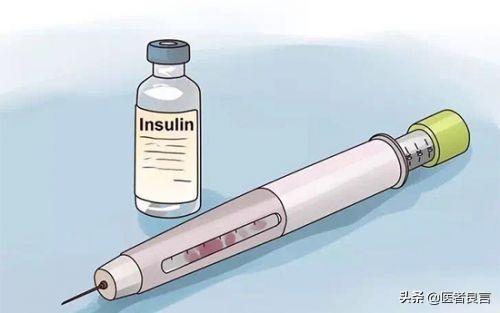
Diabetes mellitus is characterized by elevated blood glucose, including elevated fasting and/or postprandial blood glucose, through mechanisms such as insufficient insulin secretion, destruction of insulin receptors, or insensitivity of insulin receptors to insulin. Diabetes is hereditary, and by hereditary I don't mean that it's directly possible to get diabetes, but rather that the risk of diabetes is significantly higher for those who have diabetes in their immediate family than for those who have it in their normal family. In reality, a friend of mine, whose grandfather, grandmother, and father all had diabetes, was diagnosed with diabetes when he was 42 years old.
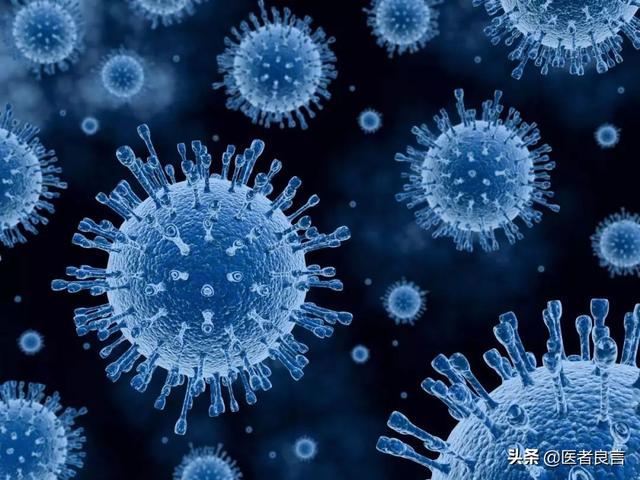
Other causes of diabetes include environmental factors, immune abnormalities, and obesity. The environmental factors mentioned here include quite a lot, including viral infections, chemical poisons and dietary factors. In reality, there are many viruses have a certain destructive effect on insulin-secreting pancreatic β-cells, viral infection damage to pancreatic β-cells has a rapid, large number of characteristics of pancreatic β-cells, pancreatic β-cells, if the reduction in the long term, naturally unable to maintain normal blood glucose. Chemical poisons mainly refers to a certain chemical composition can directly damage pancreatic β-cells, but these studies are still mainly in animal experiments, such as tetracosan, pyrimethamine and other such compounds have a certain degree of damage to pancreatic β-cells of the toxic effect.

An immune abnormality is, as the name suggests, a problem with the immune system that deals with its own people as if they were outsiders. Under normal circumstances, the role of our immunity is to remove disease-causing microorganisms, monitor the emergence of cancer, and maintain the stability of the internal environment, once the immune system has a problem, it will not distinguish between us and the enemy, and attack the pancreatic islet cells as if they were outsiders, the islet cells are attacked, the number of them will certainly be reduced, and reduced to a certain degree naturally unable to maintain a normal blood glucose.

Probably the most confusing thing for everyone is the relationship between obesity and diabetes, which needs to be highlighted here. Insulin resistance is common in obese patients. Insulin resistance mainly refers to insulin receptors are not sensitive to insulin, in which case more insulin needs to be secreted to maintain normal blood sugar. However, it should be noted that the pancreatic islet cells to secrete more insulin is equivalent to a person who often work overtime, maybe one or two days can still insist, but in the long run the islet cells will inevitably be exhausted part of the until they can not maintain normal blood sugar.
2. What does the body lack to get diabetes?

It is possible that many people will have some wrong views, such as thinking that having certain diseases is a lack of a certain substance, and it is also true that there is some validity to this argument. Take anemia for example, it may be due to the lack of iron, folic acid, protein, etc., night blindness and vitamin A deficiency, rickets and vitamin D deficiency. However, it should be noted that not all diseases are caused by a deficiency of a certain substance.
In the case of today's protagonist, diabetes, its two most critical elements are insulin and insulin receptors, and any factor that can affect these two elements has the potential to increase the risk of diabetes.
The more common types of diabetes in clinical practice are type I and type II diabetes, where the primary pathogenesis in type I diabetes is insulin deficiency. However, it should be noted that the most common type of diabetes in clinical practice is type II, which can account for more than half of the total number of people with diabetes, however, its pathogenesis is insulin receptor insensitivity to insulin. So from any point of view, it is not very rigorous to say that diabetes is due to a lack of a certain substance in the body.

However, no matter what type of diabetes you have, you need to control your blood sugar once you have been diagnosed. For type I diabetes, the main treatment is insulin. type II diabetes is treated with oral medications, including metformin, glipizide, dagliflozin, acarbose, rosiglitazone, etc. However, type II diabetes requires insulin when the pancreatic cells are failing. However, type II diabetes requires insulin when the pancreatic islet cells are failing, after all, this is the time when not enough insulin can be produced to maintain normal blood sugar.
This article is purely hand-typed, if you feel useful to you, please do not be stingy to point a praise, forward it, if there are questions, you can leave a message below, will reply ......
Eat right and exercise properly to stabilize blood sugar
Let me answer, my husband has also been a diabetic for 10 years and has kept his blood sugar stable over the years, mainly exercising and eating right. I am also concerned about diabetes because I have this type of person in my family.
Diabetes mellitus - the cause is usually a lack of insulin or a defect in insulin.For energy, every cell in the body needs sugar - especially glucose. Insulin acts on the cells. It causes them to extract glucose from the blood. In the case of diabetes, one condition is that the pancreas does not secrete enough insulin, and the other condition is that a resistance to the action of insulin develops in the cells of the body.
The result is the same in both cases, as glucose is not able to enter the cells of the human body, the level of accumulated glucose in the blood rises.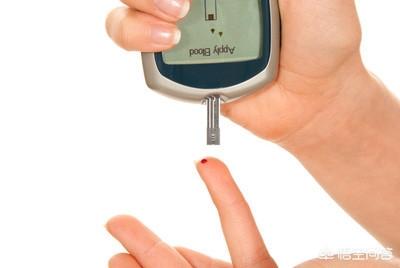
Type of diabetes:
Type 1 diabetes (usually occurs before the age of 35, in children and adolescents, insulin-dependent, accounts for 5-10% of the diabetic population).
Type 2 diabetes (the most predominant type of diabetes, where the body's cells gradually become less responsive and resistant to insulin. This group accounts for 90% of diabetes, with China's 2017 data reporting 114 million diabetics).3. Gestational diabetes: certain pregnant women have elevated blood glucose during pregnancy; however, blood glucose levels generally return to normal after delivery. Women with gestational diabetes have an increased likelihood of developing type 2 diabetes later in life.
Those who are at risk for type 2 diabetes: people over 40 who are overweight and have a family history of diabetes.

Preventive measures:
Exercise:Exercise reduces the body's need for insulin by controlling excessive obesity and also improves the action of insulin on the body's cells. Exercising the muscles utilizes glucose to make energy, which also reduces the amount of glucose deposited in the blood vessels.
Maintain ideal weight:For people over the age of 40, obesity is a significant risk factor for type 2 diabetes. A weight loss program is recommended if you are more than 10% over a reasonable weight.
Sensible diet:Consuming 20-25 grams of dietary fiber in your daily body food can reduce your chances of having type 2 diabetes. Vary your food and minimize your fat intake, while not overeating or skipping meals. Both of these can cause big ups and downs in glucose intake and create disorders in the metabolic system. Control calorie intake, reduce cholesterol levels and maintain a reasonable weight.
The three elements of blood sugar control; diet-exercise-medication, should be strictly adhered to in terms of quantity and time. Diabetics should live a regular life and here are suggestions for controlling blood sugar through diet and exercise:
◆ Eat the same food every day and choose foods with low GI values: it is best not to consume less than 150 grams of staple foods every day to prevent hypoglycemia. Mixed grains, whole grains, potatoes, beans, lean meat, fish, eggs, milk, vegetables (ensure sufficient amount of vegetables every day) are all foods with low glycemic index. Fruits can be eaten during the period of blood sugar stabilization, and about 250 grams of whole fruits every day, between meals. My husband ate a banana every day after his muscle workout and it didn't cause any fluctuation in blood sugar.
◆ Eat or snack at the same time every day; meal regularity is helpful for blood sugar control.
◆ Take your diabetes medication at the same time every day; choose your medication based on your diabetes meal type.
◆ Exercise at the same time every day; choose a combination of strength and aerobic exercises for excellent results; drink some water before and after exercise to avoid sports injuries and dehydration.
◆ Enforce meal times, snack times, medication times and exercise times, testing times. Propose to keep records so that it is easy to keep track of changes in the body and make timely adjustments.
Master the above points, make exercise a part of your life, be consistent and progressive, eat right, learn about diabetes, and the more you know, the more you can prevent diabetes and prevent and control diabetes, including keeping your blood sugar under control.
That's a good question, in western medicine it says that diabetes is caused by an absolute or relative lack of insulin secretion, so it's still diabetes caused by a lack of insulin.
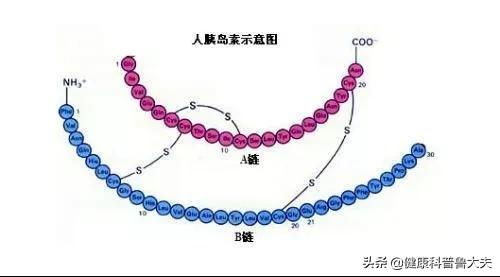
Of course the lack of insulin is a direct surface factor, so Western medical treatment will take the injection of artificial insulin to treat diabetes, and quite fast and effective, but the disadvantage is that you have to be lifelong medication, why is this phenomenon? That's because it doesn't address the reason why insulin is produced less! Insulin is secreted by the islet cells of the pancreas, and the islet cells become old, weak, and weak, and do not have enough vitality and labor, so they naturally cannot produce the amount of labor, so there will be less insulin. What can be done to solve this problem? Western medicine has been studying this aspect of the drug, and is still on the way to research, how to activate the islet cells of the pancreas? There is no good way to activate the islet cells of the pancreas.

But to change our thinking, we can focus our attention to our motherland medicine --- Chinese medicine. First of all, from the Chinese medical text only involves the heart, liver, spleen, lungs and kidneys, the lack of the pancreas has not appeared in this important organ, is it the old ancestors are forgetting it? No. There is no such thing! Absolutely not! Rather, it is the problem of the wrong translation after the entry of Western medicine into China! If you take a closer look, you will find that the "pancreas" in Western medicine corresponds to the "spleen" in Chinese medicine, which secretes pancreatic protease, pancreatic amylase, lipase, insulin, glucagon, etc. to digest the protein, amylase, lipase, etc. in the food. protein, starch, fat and blood sugar.
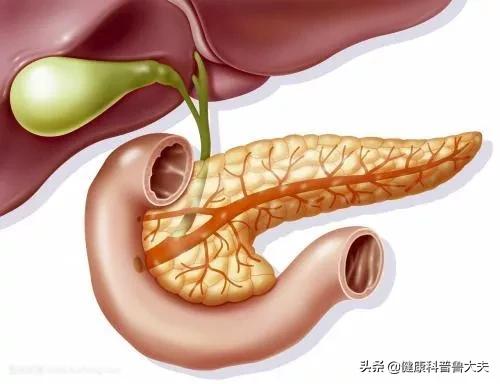
Chinese medicine, "the spleen is the master of transportation", transportation, transportation is transportation, transformation, now there is a science called chemistry, is dedicated to the study of various phenomena occurring between various substances in chemical reactions, and specific to the human body is the biochemistry, this is the "transformation" of the chemical reaction of several substances into another substance, called "chemical", and protein, starch fat, etc. under the action of various enzymes into glycerol, fatty acids, glucose, etc. The chemical reaction of several substances into another substance, called "chemical", and protein, starch and fat in the role of various enzymes into glycerol, fatty acids, glucose, etc. is the result of this "chemical", so the pancreas in Western medicine is the result of this "chemical", so the pancreas is the result of this "chemical", so the pancreas is the result of this "chemical". Therefore, the pancreas in Western medicine corresponds to the category of "spleen" in Chinese medicine! Is there any way to treat the weakened spleen in Chinese medicine? In Chinese medicine, weakening of the spleen is called "spleen deficiency".

Depending on the body type, there are various ways to strengthen the spleen. In terms of proprietary Chinese medicines, there are pills to strengthen the spleen, pills to restore the spleen, ginseng ling baijutsu san, tonifying the middle-aged and benefiting the qi pills, etc. Of course, there are also acupuncture, moxibustion, counseling, and other methods, as well as the eight-duan brocade, the five bird plays, and other traditional sports, which are all very effective for the spleen! These are all ways to support the Spleen's positive qi, so that the Spleen can really have a temper and be vibrant!

So for how does pancreatic function get damaged, leading to decompensation? This is the ultimate cause of diabetes! This aspect, Chinese medicine and Western medicine have discussed, similar, there are innate factors of course more is the acquired factors. Western medicine on the prevention and rehabilitation of diabetes are mentioned "control your mouth, open your legs", so that the energy from the mouth into the reduction, at the same time, the body's excess energy out of the conversion of the piece of food in the diet, meat, eggs, vegetables, fruits, the distribution of staple foods.

Chinese medicine "Huang Di Nei Jing" also said "five grains for nutrition, five animals for the benefit, five fruits for the help, five dishes for the full", "food and drink in moderation" are a reason, and there are also emotional aspects of the "Si injury to the spleen! "The exposition, more comprehensive. In short, diabetes is also a lifestyle disease, a disease of wealth, eat seven or eight minutes full, do not let the pancreas overwork, eat too much, will inevitably make the pancreas over-secretion of digestive juices, including insulin, for a long time will be overworked to death, this time is Chinese medicine of the spleen is weak, the emergence of obvious thirst and wasting, and other symptoms, but also have "thirst syndrome This time is the spleen deficiency in Chinese medicine, obvious symptoms such as thirst and weight loss, there will be "thirst syndrome" such a disease name, which is the Western medicine of pre-diabetes and diabetes. After eating more exercise, the energy converted out, the body's blood sugar will be reduced, the other organs will reduce the harm.

Diabetic patients love anger, impatience, easy to anger, insomnia, etc., and these need instant high energy to support, these need blood sugar supply, so that cultivate the body, enhance the inner culture of the practice, are on the prevention of diabetes, rehabilitation has a very good role, the heart is calm, self-discipline, no longer stay up late at night, go to bed early, but also on the diabetes are good.
So through the above analysis, we also know that diabetes is superficially caused by an absolute or relative decrease in insulin secretion, but further analysis reveals that diabetes is also a lifestyle disease that

Therefore, starting from the root, we need to pay attention to and change our irrational living habits, cultivate good and reasonable living habits, and cooperate with the treatment and conditioning of the body is the right solution.
Diabetes mellitus is caused by a variety of reasons, and its basic pathophysiology is an absolute or relative deficiency in insulin secretion, or (and) defective action, causing abnormalities in the metabolism of carbohydrates, fats, proteins, water, and electrolytes.
Although, diabetics are mainly characterized by high blood sugar, they have problems with the metabolism of carbohydrates, fats, proteins and other nutrients, so diabetics need to be guarded against not only carbohydrates, but also the metabolism of fats and proteins.
What are some of the common nutrients that are deficient and have a significant impact on the development of diabetes?

铬
In carbohydrate metabolism, chromium acts as a cofactor for initiating insulin, and the addition of chromium stimulates glucose uptake. The mode of action may be that the chromium-containing glucose tolerance factor promotes the formation of a stable bridge between the thihydrogen group of the cell membrane and the two disulfide bonds of the A-chain of the insulin molecule, allowing insulin to function adequately.
The toxicity of chromium is highly dependent on the valence state in which it exists; hexavalent chromium is about 100 times more toxic than trivalent chromium, but the toxicity varies from compound to compound. In food, most of the chromium is trivalent and has very low oral toxicity.
Chromium is widely distributed in food in small doses, theThe main sources of dietary chromium are cereals, meat and fish and shellfish.Whole grains contain more chromium than fruits and vegetables, refined sugar and flour have less chromium than unprocessed produce, and processed meats have higher levels of chromium.

oxidative acid
Niacin, also known as vitamin PP, niacin, and anti-mange factor.
Glucose tolerance factor is a complex of trivalent chromium, niacin, and glutathione, which is a cofactor for insulin and has the effect of increasing the utilization of glucose, as well as promoting the conversion of glucose to fat.
Niacin enhances the biological action of insulin, which can accelerate glucose utilization in the body by activating glucose phosphate translocase.
Niacin is widely found in food, animal liver, kidney, lean animal meat, fish, and nuts are rich; milk, eggs in the content is not high, but more tryptophan, can be converted to niacin.
Eighty to ninety percent of the niacin in cereals is found in their seed coat, and a significant amount is lost from refined grains.

锌
Crystalline insulin has been shown to contain considerable amounts of zinc, and zinc has been shown to play a regulatory role in insulin release.
Zinc is a cofactor for many enzymes in the body, is involved in protein synthesis and cell division and proliferation in the body, assists in the transport of glucose across cell membranes, and is associated with insulin synthesis and secretion.
Zinc deficiency causes a decrease in insulin secretion and increased tissue resistance to insulin action.
However, too much zinc can also impair insulin secretion, leading to reduced glucose tolerance and can accelerate lower limb ulcers in older diabetics.

Shellfish, red meats, and animal organ meats are all excellent sources of dietary zinc; dried fruits, cereal germ, and bran are also rich in zinc.
Cheese, large oysters, shrimp, oats, peanuts, and corn are good sources of zinc.
Finely processed grains can result in significant zinc loss, such as when wheat is processed into refined flour, where about 80% of the zinc is removed; beans made into canned goods lose about 60% of their zinc content compared to fresh soybeans.
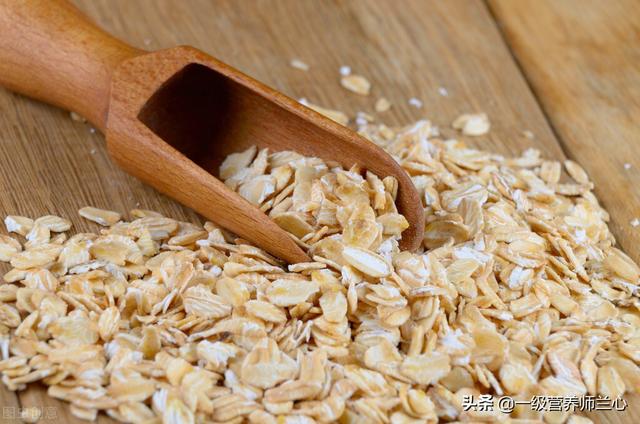
B vitamins
In addition to niacin, which is a component of glucose tolerance factor and is directly related to insulin, several other B vitamins are involved in carbohydrate metabolism.
For example, vitamin B1 can constitute coenzymes to maintain normal metabolism in the body; vitamin B2 can constitute flavoenzymes coenzymes, which are involved in the metabolism of amino acids, fatty acids, and carbohydrates, and with vitamin B2, it can activate vitamin B6, which is involved in the process of formation of nicotinic acid from tryptophan; vitamin B6 is also involved in the metabolism of amino acids, glycogen, and fatty acids through the constitution of the form of coenzymes.

Diabetic patients with exuberant gluconeogenesis and increased consumption of B vitamins, if the supply is insufficient, it will further weaken glycolysis, aerobic oxidation and pentose phosphate pathways, aggravating the disorders of glucose metabolism.
Lean meats, whole grains, and nuts are good food sources of B vitamins.

Other minerals
There are also many minerals that make up enzymes. For example, magnesium deficiency can cause insulin insensitivity in the tissues of type II diabetics; manganese is an activator of carboxylase, which is involved in the metabolism of carbohydrates and fats, and manganese deficiency can exacerbate glucose intolerance in diabetics.
dietary fiber
Dietary fiber is a class of carbohydrates that are not digested by the body and are divided into soluble and insoluble fibers. Of these, soluble fiber has an effect on glucose and lipid absorption in the small intestine.

Soluble fiber forms very sticky substances in the stomach, and these sticky substances affect the absorption and utilization of glucose, resulting in no sudden rise in blood sugar after a meal.
Dietary fiber in foods comes from plant foods such as fruits, vegetables, beans, nuts, and various grains.
Vegetables and fruits are high in water content, so they contain less fiber compared to cereals and beans. Therefore.The main sources of dietary fiber in the diet are grains. In particular, oats, barley, fruits and some legumes are rich in soluble dietary fiber.
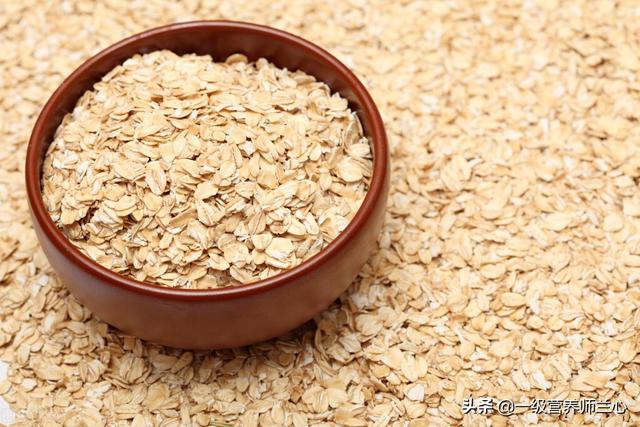
What foods should I eat to prevent and improve diabetes?
- 1, All valley goods
In summary, we should have discovered that many of the nutrients that are closely related to the development of diabetes are abundant in cereals, but they are all found primarily in the seed coat of the cereal.
Most of the grains we eat nowadays are refined rice and white flour, and those nutrients that maintain carbohydrate metabolism are wasted. The highest content of nutrients in grains is carbohydrates, refined rice and white flour has lost the vitamins and minerals that can properly metabolize carbohydrates, it is not surprising to get diabetes.
Therefore, to prevent diabetes, we should start with staple food and increase the intake of whole grains. Whole grains have a rough texture and are not conducive to digestion, so you can take a fine mix and fine grains, maintain the ratio of coarse to fine at 3:7 or 4:6, and drink some grains and soy milk in moderation.

- 2. Beans
Beans are also rich in B vitamins and dietary fiber, which are closely related to blood glucose levels, and they also have a lower glycemic index, especially soybeans, soybeans, black beans have a high content of dietary fiber, and the glycemic index is only 18. and soy products also have a lower glycemic index of about 20 more.
However, processed or canned beans, which have a greater loss of nutrients and a higher glycemic index, are not recommended for excessive consumption.

- 3. Melons and leafy vegetables
Not all vegetables are so friendly to diabetics, generally root vegetables, such as carrots, pumpkin, yams, etc., starch content is higher, the glycemic index is higher, if the dish contains such vegetables, the amount of main food should be reduced accordingly.
However, the glycemic index of melons and leafy vegetables is low, generally below 15. According to the recommendation of the "Balanced Dietary Pagoda for Chinese Residents", each person should consume 300-500g of vegetable food per day, with melons and leafy vegetables as the main ones.
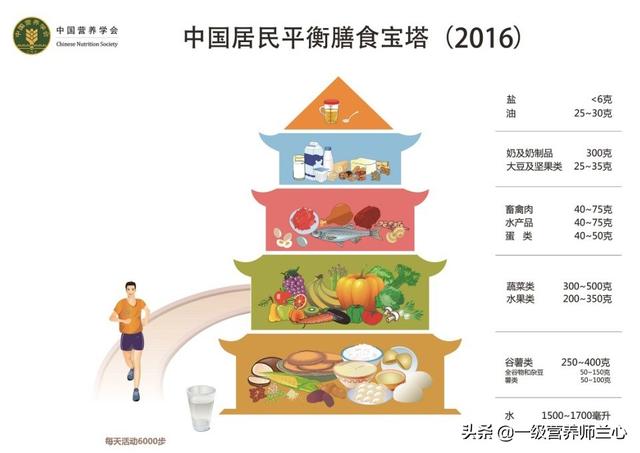
- 4. Fruit has its own rules
Although fruits contain dietary fiber, but fructose is often also higher. Healthy adults, each person's daily fruit intake of about 200-350g can, fruit is not more good, fruit types try to choose seasonal.
People with high blood sugar, try to choose apples, pears, cherries, peaches, grapefruit, plums and other such low glycemic index fruits, fruit intake is lower than normal, about 100-150g per day can be, and, between meals to eat fruit, is more conducive to the stabilization of blood sugar.

Try to eat less of these types of food
- 1. Refined sugar
Such as white sugar, brown sugar, sweet confectionery, candied fruit, ice cream, sweet drinks, etc.
- 2、High fat food
Not many people get diabetes from eating sugar, and it's easier to get diabetes from big fish, meat and fat. Excessive fat has a greater impact on nutrient metabolism and, when there is too much fat, the body converts fat to sugar.

- 3, Liquor
Wine is pure energy food, especially high liquor, almost no other nutrients, long-term large amounts of alcohol, will damage the liver, and the liver is the main place of metabolism, the liver is damaged, how to ensure that the metabolism is normal.

concluding remarks
No disease is caused by a single factor, and preventing disease is not simply a matter of what you eat or don't eat.
Healthy body, is obtained through a healthy lifestyle, dietary structure should be rationally arranged, to have enough sleep, to maintain a good mood, to ensure that moderate exercise, a combination of factors in order to create a healthy body.

Diabetes has always had a serious impact on our health. It is a disease that not only causes various physical ailments, but more often than not, it also has a major psychological impact on us. Therefore, in real life, whenever someone mentions diabetes, we will hate it. However, in the face of the disease, fear and disgust is by no means useless, more we need to really understand it, in order to achieve early prevention, and even early detection and treatment.
In fact, for those who have been diagnosed with diabetes, when we change our mindset and learn to cope with diabetes with the right psychology, diabetes will become not so terrible. As for the healthy people, in order to prevent diabetes, it is necessary to understand the causes of diabetes, and then from the cause of prevention, which is really wise. Next, this article with you a detailed knowledge about diabetes.
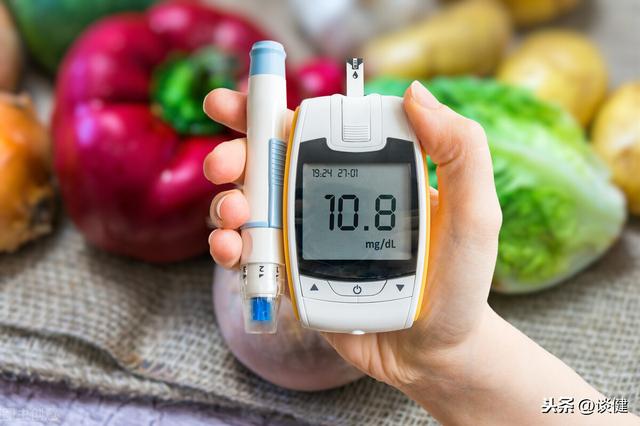
A general introduction to diabetes
In clinical practice, diabetes is categorized into type 1 diabetes, type 2 diabetes, other specific types of diabetes and gestational diabetes. Despite the fact that they all have diabetes hanging over their names, they have their own different etiologies. Nevertheless, the similarity between them is that they all have chronic hyperglycemia, and under the mechanism of action of chronic hyperglycemia, a series of metabolic problems will be presented, such as damage to the heart, kidneys, eyes and other organs triggered by disorders of fat and protein metabolism. In severe cases, it can even kill people in minutes.
At the end of the day, no matter what type of diabetes you have, it is not the disease itself that is the most deadly, but the array of diabetes complications. With so many complications literally on the table, to say that we are not afraid is just comforting ourselves. However, as long as we can actively control the condition through diet, lifestyle habits, medication, and exercise, we can delay, or even make permanent peace with, diabetes.

An analysis of the many causes of the major types of diabetes
Type 1 Diabetes: Type 1 diabetes is an autoimmune disease that affects the pancreas and accounts for only 5-10% of people with diabetes.4 It occurs when the body's immune system attacks the insulin-producing beta cells in the pancreas and destroys them.People with type 1 diabetes don't produce insulin, and need to take insulin by injection or infusion so they can maintain blood sugar control and use carbohydrates for energy. Elevated blood sugar can lead to weight loss, excessive hunger, and thirst, all of which are signs of type 1 diabetes.
Most type 1 diabetes is due to a combination of genetic and environmental factors. Genetic factors, which are well understood, means that the presence of diabetes in the parents is genetically inherited by their children; while environmental factors are mostly related to viral infections, such as coxsackie virus, cerebral myocarditis virus, rubella virus, mumps virus, etc.

Type 2 Diabetes: Type 2 diabetes is the result of one of two things: either the pancreas begins to release too little insulin, a hormone is released within minutes of eating to help the body store glucose, or the body is unable to respond adequately to insulin, which is also clinically known as insulin resistance. In addition, obesity is one of the leading causes of diabetes because excess body fat causes insulin resistance. A lifestyle of physical inactivity, that is, too little exercise throughout the day increases the risk of type 2 diabetes. Smoking increases blood sugar and causes insulin resistance. According to the Centers for Disease Control and Prevention, smokers are 30 to 40 percent more likely to develop type 2 diabetes than nonsmokers.
Other specific types of diabetes: This type of diabetes is mostly associated with specific diseases. In other words, they are caused by a specific disease, most commonly pancreatitis and Cushing's syndrome.

Gestational diabetes: Gestational diabetes develops when the pancreas is unable to adapt to insulin resistance, which is common during pregnancy due to the secretion of placental hormones. In our country, about 6 to 9 percent of pregnant women suffer from gestational diabetes. When cells are resistant to insulin, sugar or glucose builds up in the blood and is more common during pregnancy especially in obese women. In addition, the risk of diabetes or hyperglycemia during pregnancy is 8.2 times higher for some women over the age of 40 than for pregnant women in their 20s and 30s. However, most women with gestational diabetes will have their blood sugar return to normal after the birth of their child, but there are many women who have difficulty recovering. So in this respect, it is important for women to avoid getting pregnant at an advanced age while they are busy working at a young age.

What is the treatment for diabetes?
All treatment plans for people with diabetes should be individualized and not treated equally. A person's past medical history, glycemic control, culture, dietary preferences, and goals should all be considered and will be very important when developing a treatment plan. For example a person diagnosed with diabetes can begin treatment by making lifestyle changes that doLosing weight, reducing intake of processed foods and simple sugars, increasing exercise, and quitting smoking。
Given that some type 2 diabetics with very high HbA1c need hypoglycemic medication, such as metformin. Even with medication, it is equally important to enhance exercise, watch your diet and change your lifestyle habits to maximize the effect of the medication. Everyone's needs for diabetes treatment will be different, so please don't compare yourself to others.
The most common treatment for people with type 1 diabetes is insulin injections. In addition to insulin injections, equal emphasis should be placed on lifestyle changes, exercise and diet. In addition, it is recommended that people newly diagnosed with type 1 and type 2 diabetes should receive a dilated eye exam within five years of diagnosis and annually thereafter.
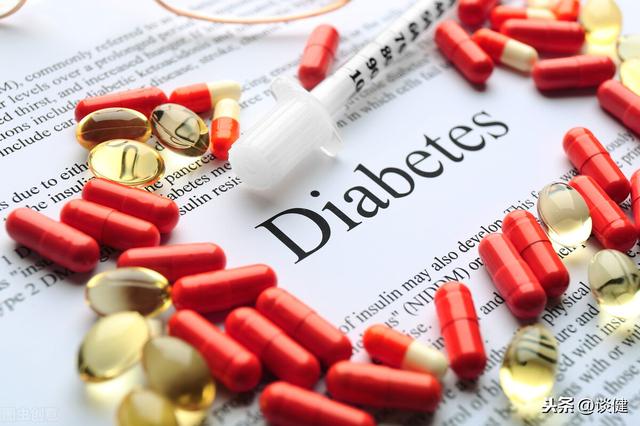
Conclusion:
Managing diabetes can become tiresome, confusing and overwhelming, especially if a person is not fully informed about their condition and treatment plan. Regardless, it should be clear that losing weight, eating a healthy diet, exercising, and quitting smoking are important for preventing diabetes. This is especially true for those with a family history of heart disease or type 2 diabetes. For those with diagnosed diabetes, the most important thing is to make changes to their lifestyle along with medication to reduce the risk of diabetes complications. Despite the potential for long-term complications of diabetes, people with diabetes can live healthy lives for a long time with good control.
The cause of diabetes is still unclear and, in general, is the result of a combination of genetic, environmental and autoimmune factors.
genetic factor
The probability of inheriting diabetes is relatively high. Studies have found that more than 50 genetic abnormalities are associated with type 1 diabetes and more than 400 with type 2 diabetes.
So if both parents have diabetes, the probability of having a child with diabetes can be as high as 50%. If one of the parents has diabetes or is genetically predisposed to it, the probability of the child developing diabetes is also much higher than if the parents or the parents are not genetically predisposed to diabetes.
However, genetic factors only allow the human body to have a certain susceptibility to the disease, the occurrence of diabetes also need environmental factors "help".
environmental factor
Although genetic factors play a major role in the development of type 1 diabetes, viral infections and chemical agents can lead to the destruction of pancreatic β-cells, which in turn leads to a decrease or lack of insulin and triggers diabetes.
The onset of type 2 diabetes is highly related to lifestyle. Poor lifestyle such as excessive intake of high-calorie and high-fat food, overeating, staying up late, little exercise, smoking and drinking can lead to the development of type 2 diabetes.
immune system
The most closely related to the immune system is type 1 diabetes. A variety of autoimmune antibodies, such as glutamic acid decarboxylase antibodies and islet cell antibodies, can be detected in the blood of patients with type 1 diabetes. These abnormal autoantibodies can damage the insulin-secreting cells of the body's pancreatic islets, preventing them from secreting insulin normally.
In addition, diabetics or their relatives often have other autoimmune diseases such as chronic lymphoid thyroiditis and myasthenia gravis.
Diabetes mellitus has become the third most serious disease jeopardizing human health. Although diabetes does not cause immediate death, it jeopardizes the heart, brain, kidneys, blood vessels, nerves, skin and other organs and systems, causing serious complications, and is the main cause of death and disability from diabetes.
Diabetes mellitus can lead to aortic and cerebral atherosclerosis and extensive small-vessel endothelial proliferation and capillary basement membrane thickening; diabetic nephropathy; peripheral vasculopathy leading to necrosis of the extremities due to insufficient blood supply to the lower extremities; diabetic retinopathy and diabetic cataracts; ketoacidosis and hyperosmolar non-ketotic coma; recurrent skin infections and other complications.
That's why it's important to be proactive in the prevention and treatment of diabetes, regardless of the type, especially in keeping your blood sugar stable.
Blood glucose is a fluctuating value, and the amount of diet, activity, and mood are all related, so for diabetic patients, fasting blood glucose control at 4~7mmol / L, 2 hours after meals blood glucose control at 4~10mmol / L is better.
For treatment, lifestyle interventions are recommended as a first step.
1,light dietIn addition, avoid eating fried foods, avoid consuming too much high-calorie and high-fat foods, and avoid overeating.
2,Live a regular life and avoid late nights。
3,proper exerciseIt is recommended that diabetic patients exercise appropriately one hour after meals, using aerobic exercise, do not recommend strenuous exercise, so as not to strain the muscles. Long-term exercise can reduce weight, increase insulin sensitivity, conducive to blood glucose control, for delaying the occurrence of chronic complications of diabetes also has a very important role.
4,give up smoking and limit alcohol consumptionDiabetic patients are advised to quit smoking because smoking can lead to atherosclerosis and induce cardiovascular and cerebral vascular diseases, so diabetic patients are advised to quit smoking. Diabetic patients should pay attention to control the amount of alcohol consumption, the amount of alcohol should not be too much, and do not recommend drinking a lot of alcohol on an empty stomach to avoid serious hypoglycemia.
Type 1 diabetes requires lifelong insulin injections to regulate blood glucose, and type 2 diabetes requires lifelong medication if blood glucose does not drop after lifestyle interventions.
Diabetes can be said to be a common chronic disease in modern society, which is not only related to genetic factors, but also closely related to the usual dietary habits, it can be said that diabetes has become one of the major non-infectious diseases that jeopardize public health, and the chronic complications caused by it have brought a heavy burden to the individual, the society and the national health care, which not only seriously affects the patient's quality of life, but also even causes patient renal failure, blindness and cardiovascular diseases.
So, where does this diabetes come from? Is it due to the lack of certain elements or substances in the body that leads to the development of diabetes, like other diseases? To understand this question, we must not only know what diabetes is, but also know the causes that lead to the emergence of diabetes.

First of all, what is diabetes?
Diabetes mellitus is a group of chronic, systemic metabolic diseases characterized by hyperglycemia due to defective insulin secretion and/or its reduced biological effect (insulin resistance). Long-term diabetes can lead to damage to multiple tissues and organs in the human body, especially causing long-term damage to the eyes, kidneys, nerves and cardiovascular system, and serious complications such as renal insufficiency and failure.
And we clinically determine whether it is diabetes, there is also a judgment standard, not once the high blood sugar can be judged diabetes, and the judgment standard of diabetes is to meet one of the following can be diagnosed as diabetes:
①Typical symptoms of diabetes mellitus (three more and one less: drinking more, eating more, urinating more, and wasting), plus blood glucose higher than 11.1 mmol/L (200 mg/dl) at any given time.
(ii) Fasting blood glucose, two or more times above 7.8 mmol/L (140 mg/dl).
③ Fasting blood glucose does not exceed 7.8 mmol/L, suspected of diabetes, can do oral glucose tolerance test, oral sugar 2 hours after blood glucose more than 11.1 mmol / L; if there is no diabetic symptoms, still need to have another blood glucose more than 11.1 mmol / L.
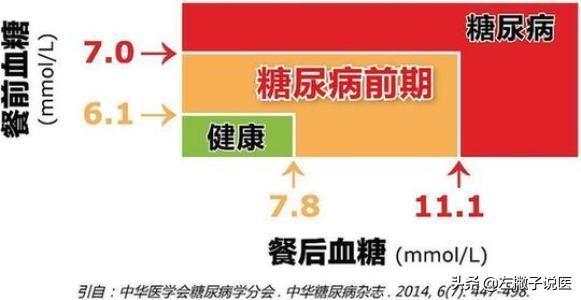
Therefore, to diagnose diabetes in our clinic, we must draw blood to check blood sugar, either fasting blood sugar or blood sugar 2 hours after meal. But there is a note that must be two consecutive days of blood glucose measurement, all meet the above diagnostic criteria, then can be diagnosed as diabetes.
Secondly, let's talk about the causes of diabetes. Having said that the meaning of diabetes has been and the diagnostic criteria for diabetes, let's talk about how this diabetes actually comes about, could it really be caused by a lack of something?
Diabetes in the end is the body's blood sugar can not be broken down and utilized in a timely manner, thus making the blood appear high in sugar, it can be clinically divided into 4 types, which are type I diabetes, type 2 diabetes, other specific diabetes and gestational diabetes.
Type 1 diabetes mellitus is caused by the destruction of pancreatic β-cells, resulting in an absolute lack of insulin in the body, including immune-mediated and idiopathic types of diabetes mellitus. In other words, type I diabetes is due to the absolute lack of insulin, which is unable to break down the blood sugar in the body, resulting in the accumulation of blood sugar and high blood sugar.
(ii) Type 2 diabetes is defined as predominantly insulin resistance with relative insulin deficiency, or predominantly defective insulin secretion with insulin resistance; this has both insulin deficiency and insulin resistance.
(iii) Other specific diabetes mellitus, which is a complex cause of hyperglycemia due to a variety of specific causes, such as genetic abnormalities of pancreatic β-cell function; pancreatic exocrine diseases; endocrine diseases; drugs or chemicals; infections; uncommon types of immune-mediated diabetes mellitus; and other genetic syndromes accompanied by diabetes mellitus, among other causes.
④ Gestational diabetes is diabetes that occurs or is first detected during pregnancy. This diabetes usually returns to normal when the pregnancy is over.
From the above classification of diabetes, we know that diabetes is not necessarily caused by the lack of certain substances, as in the case of type 1 diabetes, which can be said to be caused by the lack of insulin, and the treatment is also through the injection of insulin. However, type 1 diabetes is a minority in our daily life, while type 2 diabetes is the majority. Type 2 diabetes is mainly caused by insulin resistance, not lack of insulin. Therefore, diabetes is not simply the result of a lack of certain substances.
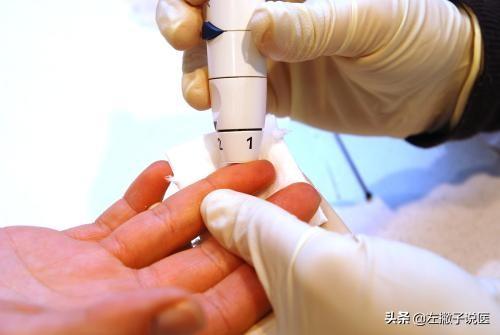
Finally, regardless of the cause of diabetes, it is important to minimize carbohydrate intake, to keep an eye on your blood sugar levels, and to keep your blood sugar under control in an ideal range so that you can minimize diabetes complications and improve the quality of life of diabetics.
Author's note: I'm very happy to popularize health-related knowledge for everyone, I'm left-handed to say medical, every day in simple language for you to popularize professional medical knowledge, the code word is not easy, if you like my article, help me to point a praise! If you still have questions, you can leave a message in the comments section, welcome to pay attention to, forward, thank you for your support!
We often have a deep-rooted misunderstanding of the disease, that is, it must be a lack of what will lead to the occurrence of the disease, such as found that a person has anemia, which must be a lack of iron ah, for example, a person's body immunity is not good, often colds, you're a lack of nutrients ah, no matter what the disease, always think that it is a lack of what is caused by the disease, but in fact, the vast majority of cases for people with diabetes, are But in fact, for diabetics, in the vast majority of cases, it is not thought that there is a lack of anything.
Many friends know that diabetes is divided into two types: type 1 and type 2 diabetes. A part of type 1 diabetes is caused by the absolute lack of insulin in the body, insulin is the body to complete the metabolic decomposition of sugar, supplying the body to convert the use of important substances, if the body lacks insulin, the sugar in the blood can not be effectively converted to use, blood glucose naturally rises, for patients with type 1 diabetes, the need for lifelong injections to supplement the body's insulin to strengthen the control of blood glucose to reduce the health risks brought about by high blood sugar. The health hazards of high blood sugar.
But this situation in the diabetic patient is only a minority, and for diabetic patients, more common is type 2 diabetic patients, about type 2 diabetic patients, consider the cause of the disease, it is not because of the "lack of what", but more research that the problem of type 2 diabetes, and the human body's long-term energy excess is closely related.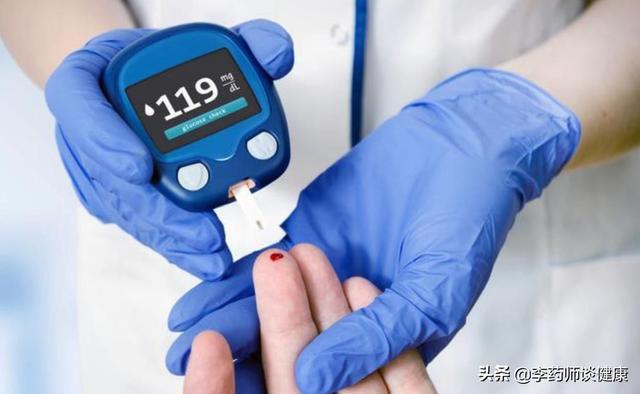
Although the medical community has been studying the underlying causes of type 2 diabetes for many years, so far there is no definitive answer.The distinguishing pathophysiological feature of type 2 diabetes is the decline in insulin's ability to regulate glucose metabolism (insulin resistance), accompanied by a decrease (or relative decrease) in insulin secretion due to defects in pancreatic islet β-cell function.2 The most common cause of type 2 diabetes is insulin resistance in the muscle and liver. Insulin resistance and β-cell failure in muscle and liver were the first to be identified as the pathologic basis of type 2 diabetes.
In addition to these three pathological defects, researchers have found that adipocytes (accelerated lipolysis), the gastrointestinal tract (enteroglucagon deficiency/resistance), alpha-cells (hyperglucosemia), the kidneys (increased glucose reabsorption), and the brain (insulin resistance) all play important roles in the progression of the disease in patients with T2DM, and together they comprise the "octet" of diabetes mechanisms. The "Octet".
In addition, from the current level of understanding, a consensus can be reached is that long-term energy excess is not corrected, resulting in the accumulation of excess fat in the liver and pancreatic islets, gradually leading to insulin resistance, insulin secretion and other problems, ultimately leading to abnormal glucose metabolism, elevated blood glucose, which is an important cause of diabetes mellitus, and the modern medical research, but also the "correction of excess energy" as a new target for the prevention and treatment of diabetes. Modern medical research has also taken "correcting excess energy" as a new target for diabetes prevention and treatment.
Therefore, for type 2 diabetes, whether it is to prevent diabetes or to control blood glucose for those who already have diabetes, we should not consider the problem of "what is lacking", but rather the problem of "what is in excess". Diet, control intake, can reasonable exercise, strengthen the body's sugar metabolism and improve insulin resistance, can reasonable use of drugs, through different mechanisms, to improve the absorption of blood glucose, metabolism, excretion, these aspects, are the focus of the prevention and treatment of diabetes, and should not only consider what is lacking, what is the complement of such a simple and ineffective problem.
Diabetes is actually a factor in many ways, not necessarily a lack of anything. Of course since diabetes is endocrinologic, the vast majority of factors are still the result of an insulin imbalance.
Of course, diabetes is not a day or two to get, because it is necessary to be quite a long time, there will generally be a process, such as the beginning of the time is insulin impedance, this time a lot of people fasting glucose is probably close to 6, once more than 7, basically will be diagnosed as diabetes, if the value of blood glucose is more than 11 or more, at this time it is more obvious that insulin secretion is extremely reduced, that is, there is no way to break down the dietary Glucose intake.
But a lot of people are usually around 6 when still do not pay attention to diet, exercise and lifestyle habits, such as high calorie, high sugar, and less exercise, continue, blood sugar will be higher and higher. Because at this time of insulin impedance, if you then consume too much sugar, naturally there is no way to break down and consume, these sugars continue to accumulate in the body of course, it will lead to the blood sugar value increased.
A chronic disease like diabetes must be a matter of regularity in many aspects of life such as diet, exercise, and rest.
Diabetes is becoming more and more common nowadays, and there are a lot of people who don't understand why they get diabetes and if it's caused by something the body is missing.Is there a lack of insulin, so don't you just take insulin, and why is diabetes so hard to cure?Let's talk about that today!
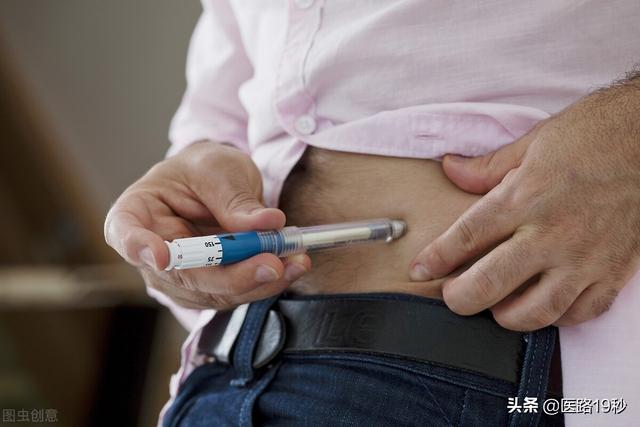
If I had to say that the human body is lacking in something that causes diabetes, it could be said to be insulin, as theInsulin is the only hormone in the body that can lower blood sugar.So why don't we just produce more insulin and give diabetics an insulin supplement and be done with it? In fact, truly speaking, the human body is basically not insulin deficient, at least for most diabetics, and here's why.
We know that diabetics have a series of metabolic problems caused mainly by high glucose in the blood, and this glucose is mainly ingested from our food, enters the bloodstream, and is then distributed to the various organs and tissues to play a role. So every time we eat a meal, blood glucose will rise, but after a few hours the blood glucose is distributed in the blood, then the blood glucose level returns to normal.
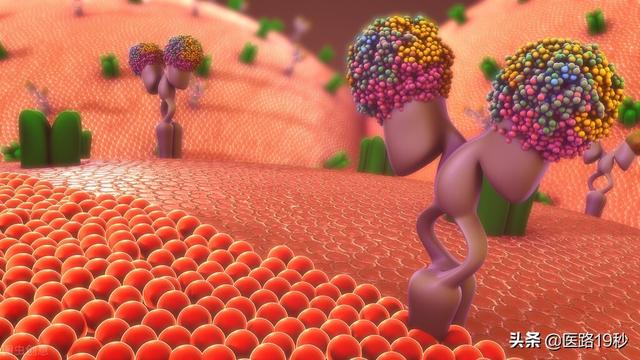
And this distribution is largely done by insulin, theInsulin is secreted by pancreatic B-cells into the bloodstream and then into the tissues of the internal organs; it is the equivalent of a key that opens channels in various places.for exampleOpen cellular channels, allowing glucose to get into the cell and provide the cell with capacity;Open to liver cells, promotes glucose into the liver cells to synthesize glycogen and store glucose away;Open the muscle cellsthat promotes glucose into muscle;Opening the door to adipose tissuethat allows glucose to enter the adipose tissue and turn into fat for storage. Also insulin inhibits the formation of various kinds of glucose in the body, such asInhibits the breakdown of protein to glucose, the breakdown of fat to glucose, and the breakdown of glucose by hepatic glycogen.
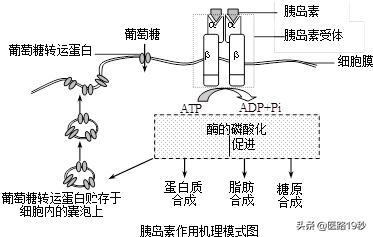
Anyway, in a word, insulin does everything it can to get the glucose in the blood down to normal levels.
But when weThe immune system or some viruses such as the mumps virus destroy pancreatic islet B cells for various reasons,It leads to the failure of insulin secretion and causes absolute insulin deficiency.Lack of insulin's distributive action results in a high level of blood glucose in the blood, which is what we call type 1 diabetes. This is a minority of diabetes, probably only about 5%, and is mostly seen in children or adolescents.People with type 1 diabetes tend to be thin because all the glucose is in the blood, the cells lack glucose, the whole organism is a state of lack of energy, this type of diabetes can only be treated with insulin.
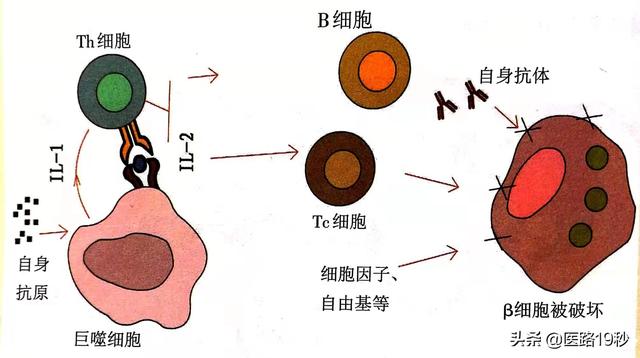
而More diabetes is caused by obesity, being overweight, or consuming too much energy over a long period of time, resulting in insulin, a key that is not sensitive and sometimes doesn't open the lock or is difficult to open.The cells become resistant to insulin and there is a rise in blood sugar caused by insulin working too inefficiently, which is called type 2 diabetes.In this type of diabetes, insulin production is usually normal to begin with., which means that the insulin is not deficient, but it is just not very sensitive, so the blood sugar is still high. Treatment will generallyChoose some medications that increase insulin sensitivity, such as pioglitazones; pancreatic B-cells, if they are functioning normally, will also beA selection of drugs that promote insulin secretion, such as sulfonylurea hypoglycemic drugs. However, if long-term high blood glucose causes a series of metabolic problems, which can also lead to impaired function of pancreatic islet cells and start to show insufficient insulin secretion, then this time you can choose to take insulin treatment.
That's why diabetics don't simply supplement with insulin, they should go for different medications for different types of different conditions.And diabetes is even more critical to remove the source of diabetes development, weight control, more exercise exercise, reduce excessive energy intake for diabetes prevention and control are of great help.At the same time, diabetics are prone to vitamin B deficiency because of their relatively vigorous metabolism, which should be supplemented appropriately; and vitamin C, zinc and selenium, which help prevent various complications of diabetes, can also be supplemented appropriately. There is an old saying"Sickness comes and goes."It's very important to take precautions in general. Exercise more often!
This question and answer are from the site users, does not represent the position of the site, such as infringement, please contact the administrator to delete.